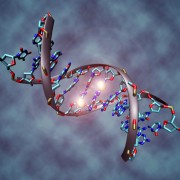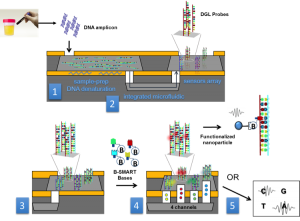Avances en Bio-funcionalización: Proyecto BioprintedQCM de AWSensors
Advanced Wave Sensors S.L. (AWSensors) participa en el proyecto BioprintedQCM, una iniciativa pionera en el campo de los biosensores. Este proyecto, apoyado por la Agència Valenciana de la Innovació y cofinanciado por el fondo europeo FEDER, se enmarca dentro del programa “Proyectos de Consolidación de la Cadena de Valor Empresarial” (Convocatoria 2023).
El proyecto, que comenzó en octubre de 2023 y se extenderá hasta diciembre de 2025, y cuenta con una subvención de 178.219,62 €, tiene como objetivo principal desarrollar nuevas técnicas de bio-funcionalización superficial para la inmovilización precisa de sondas de biorreconocimiento en microrresonadores acústicos. La técnica BioprintedQCM se aplica en el desarrollo de biosensores basados en dispositivos HFF-QCM ARRAY, propiedad de AWSensors, permitiendo crear biosensores más eficientes y de menor coste.
En 2024, el proyecto BioprintedQCM ha logrado avances significativos en el desarrollo de una nueva técnica bioquímica de funcionalización de superficies para la inmovilización de sondas de bio-reconocimiento en micro-resonadores acústicos. Este proyecto, liderado por AWSensors, se centra en la creación de biosensores avanzados basados en dispositivos HFF-QCM ARRAY, capaces de detectar múltiples sustancias simultáneamente.
Principales Logros en 2024
En 2024, el proyecto BioprintedQCM ha logrado avances significativos en varias áreas clave. Se han diseñado y evaluado dos soluciones de encapsulado para los arrays de sensores, optimizando el proceso de fabricación y reduciendo costos. Además, se ha desarrollado un proceso de fabricación semi-automático y un sistema de control de calidad para los arrays encapsulados. En cuanto a la técnica de funcionalización superficial, se ha seleccionado una bioimpresora avanzada para la funcionalización precisa de los arrays y se ha integrado esta tecnología con los sensores HFF-QCM ARRAY, logrando una funcionalización precisa y repetible de los microsensores. La funcionalidad de los bioreceptores inmovilizados ha sido validada mediante un ensayo colorimétrico, demostrando su efectividad y especificidad, y se ha iniciado la transferencia del protocolo de impresión a los sensores HFF-QCM ARRAY. Por último, en el desarrollo del biosensor multianalito, se han seleccionado los contaminantes emergentes diana, incluyendo genes de resistencia antimicrobiana, y se han desarrollado y validado los protocolos bioquímicos de detección en sensores HFF individuales, demostrando su viabilidad y efectividad.
«Actuación cofinanciada por la Unión Europea a través del Programa Fondo Europeo de Desarrollo Regional (FEDER) de la Comunitat Valenciana 2021-2027»

¡Sigue nuestras actualizaciones para conocer más sobre los avances de este emocionante proyecto!







